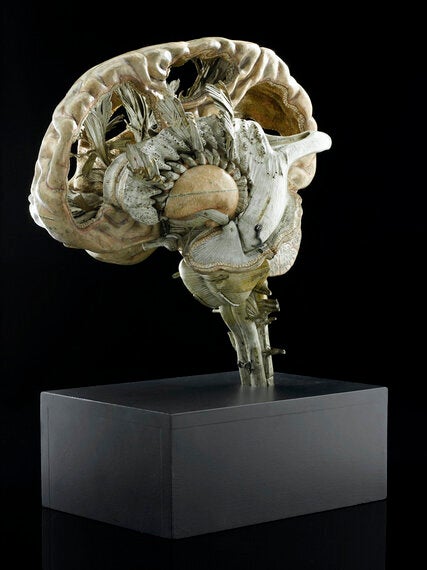
Mental illness, how it is caused and what we can do to treat it is a pressing issue in contemporary society. Psychology has not always been perceived as a science in the outside world but in this fascinating - and free! - exhibition, the Science Museum has brought the scientific assessment and treatment of mental illness centre stage.
Mind Maps focuses on how mental health conditions and other psychological disorders have been treated over the past 250 years, from its crude beginnings in the 18th century through to the present day. The exhibition shows how far we have progressed in our understanding of the mind and how treatments for mental health conditions have evolved.
There is a wide range of exhibits on show. Some of these are fascinating, such as the sound of electrical signals in the brain and how these change drastically during a seizure. Others, inevitably, are quite traumatic. The controversial treatment of ECT (electro-convulsive therapy) is included, as are exhibits of an ECT machine and the gags necessary to put into a patients' mouth.
What is fascinating is how these eye-watering and wince-inducing approaches (and that's just looking at it. I'd hate to think what it was like for the patients) have developed our understanding of how nerves relate to thoughts, behaviour and mental health. Therefore is it possible that if we tackle nerves, we can impact mental wellbeing?
An early connection between nerves and electrical stimulation to impact the brain was the thinking behind Luigi Galvini's pioneering experiments in the 18th century. Galvini passed electric currents through animals, famously making a dead frog twitch even when it was electrically insulated from the generator.
If all of this sounds eerily familiar to the non-science specialist that's because Galvini's experiments, and in particular a more ambitious demonstration given by his nephew Giovanni Aldini in London in 1803 on a human corpse, was the inspirational spark for Mary Shelley's Frankenstein.
There's certainly a shadow of man playing God across a lot of this exhibition but it's also apparent that we have come so far in our understanding. Yes, our nerve impulses affect our sensory perceptions. And our nerve impulses can be affected by electricity. But there is so much variation from person to person, hence the expansion into pharmaceuticals and biochemistry, as well as therapeutic treatments.
So there is humility in this exhibition also. Science doesn't claim to have all the answers - not yet. As with so much in science, there is still so much more to know.
There's much set aside in this exhibition on alternative, non-invasive methods such as Freud, who was a nerve doctor but rejected this in favour of psychoanalysis. There are self-help books also and, fascinatingly, a glimpse into innovative new methods such as avatar therapy, where patients who hear voices are able to talk about their experience through the use of avatars.
Mind Maps really is a superbly curated exhibition on an extremely topical subject. The quality of the exhibits and the narrative alongside them, illuminating the visitor with so much more insight, follows on from other high quality exhibitions at the Science Museum such as the fascinating Collider exhibition (which is still on) and the wonderful Alan Turing exhibition.
The push from the Museum to challenge itself and deliver such accessible exhibitions on a range of topics is highly commendable and gives hope that more and more people and families will enjoy visiting the Museum.
Science Museum, London
To June 10, 2014
Picture credit: Model of a human brain, sectioned, French, first half 19th century, credit Science Museum.